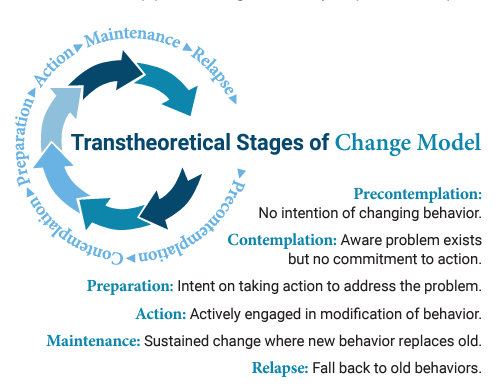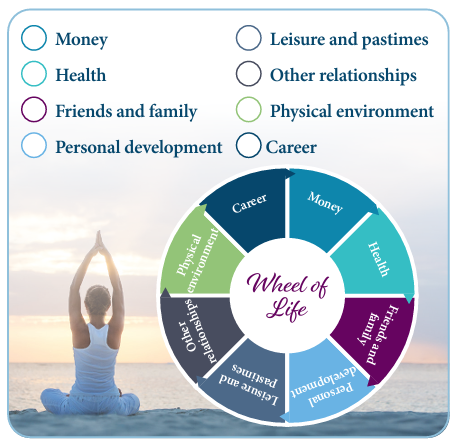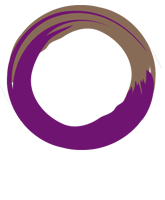Case Study Excerpt: An Integrative Health Coach Approach to Supporting Behavioral Change

Patient Information
Stephanie is a 39-year-old single mother living in Los Angeles, California, with her four-year-old son. She works as a bank branch manager and sits in an office chair for most of her workday. She was recently diagnosed with hypothyroidism after struggling with her health and weight for most of her life.
Social History:
- Non-smoker
- Drinks alcohol socially
Vital Signs:
- Height: 5’3”
- Weight: 205 lbs
- BMI: 36.1
- Total cholesterol: 210
- HDL cholesterol: 75
- Blood pressure systolic: 155 mm Hg
- Blood pressure diastolic: 89 mm Hg
- Non-fasting glucose: 128
Medications:
- Hormone medications
- Antidepressant
- Beta-blocker for blood pressure
Health Concerns:
- Hypothyroidism
- Obesity
- Depression
- Joint pain
Health Coach Perspective: Laura Calascione-Nguyen, NBC-HWC, FMCHC
Laura's top priority with Stephanie is to meet her where she is right now. In their time working together, Laura hopes to help Stephanie develop agency, empowerment, and confidence to voice her needs and seek support to live a full and healthy life with as much balance as possible.
First visit
The first session would be 90 minutes to create a generous amount of time for the client to become comfortable and have unrushed space to share what is important to them. The focus during this initial interaction would be building rapport. Laura would ask Stephanie what brought her in, hoping to hear in her own words why she is there and wants to work with a health coach. This would allow Laura to assess and gain insight into her readiness to change. 
The health coaching process is client-driven, so Laura would work to make sure Stephanie felt safe and supported and try to develop her confidence over time. Laura would want to deeply understand how Stephanie learns and navigates challenges. This could help provide insight into why Stephanie finds plans reasonable in her practitioner's office but struggles to make changes on her own at home. With Stephanie, there is a pattern of signing up for programs and losing interest. Laura would want to spend a good amount of time understanding what has worked in the past, what has not, and how she perceives her past experiences. Laura would also want to ask Stephanie what support feels like for her, specifically how she thinks Laura could support her and areas in her life where she could benefit from having someone walk beside her. The goal is to understand both where the client is and where they perceive they are.

Additionally, during the first visit, Laura would discuss with the client the principles of the Wheel of Life, a commonly used coaching tool, which asks individuals to rate areas. This tool takes coaching clients through nine different areas of their lives, asking them to consider how fulfilled they are in relationships, well-being, finances, fun, and development.
This tool would allow Stephanie and Laura to look at her life from a well-rounded perspective and identify where she might be experiencing imbalances, as well as opportunities to refill to fullness. Rather than having Stephanie fill out a form, the process would be conversational, and Laura would write notes and ask several follow-up questions to understand how Stephanie really feels about each area and where she might like to see improvement. Toward the end of the conversation, Laura would show Stephanie her completed wheel, which can be a powerful visual and pivotal moment in the behavior change process, especially when paired with recommendations prescribed by a primary care physician or registered dietitian.
Care plan
After the initial session, Laura would want to structure a program of at least 12 weeks, where she and Stephanie would meet on a weekly basis for one hour. As Stephanie starts to learn more about herself and adopt changes, it is important to have continual connection and positive reinforcement.
The sessions following the first meeting would focus on goals developed by Stephanie with the support and guidance of Laura. They may review plans prescribed by Stephanie’s primary care physician or registered dietitian, but Laura would focus more on how Stephanie interprets those recommendations and what she feels gets in the way of implementation. The focus would always go back to Stephanie, why she initially feels plans are reasonable, and what she feels she can reasonably do to get her closer to her goals.
Sessions would be client-centered and client-directed. For example, if Stephanie asked Laura for accountability, Laura would ask Stephanie what that looks like to her. Likewise, if Stephanie were struggling with a particular assignment from her provider, Laura would help her explore ways to work through it. Stephanie may respond and say she's not honest in her food journals, and Laura would then create an environment where they could come up with ideas and solutions together. Laura would ask what about food journaling doesn't resonate with Stephanie and what would make the process easier. Stephanie may say taking a picture of her food would be much easier than journaling, and Laura would then encourage her to start taking pictures. This process would create more awareness and accountability, as well as lay a foundation to build upon.
How sessions progress is completely about where the client is and what they feel confident and capable of, Laura said. In cases where a client is not able to think of an idea, Laura would ask if they want to brainstorm ideas together. Clients are typically amenable to this, so Laura would then ask who wants to go first. The client would either offer the first idea or ask Laura what she would suggest. If the latter, Laura would ask the client what they thought about a particular idea versus simply telling them what she thinks or what to do. This breaks the ice but also keeps the client in the driver's seat, helping to develop their agency and empowerment. Even if they don't have the first idea, they're still driving the conversation by asking the coach to come up with an idea. Small moments like this in coaching have the power to transition into greater confidence, which can extend into many other areas, Laura said.
Customizing Approaches
For Stephanie, client-directed Specific, Measurable, Actionable, Realistic, and Time-Bound (SMART) goals would be important, as she has a history of trying and losing interest. Laura would want to understand what Stephanie has tried in the past and why, or if other people have directed what she’s tried, and she lost interest because it didn’t align with what she believed in or wanted for herself.
Laura would want to encourage more agency and identify motivating factors. Since giving birth to her son, Stephanie has struggled with energy, and things have been more challenging. She also has a history of depression, little motivation, and relying on comfort foods. Laura would want to explore whether the presence of her son could potentially be an aspect that provides things to look forward to or some initial motivation to help her get started. Laura would also focus on supporting the process of uncovering positive emotional attractors to give her fuel moving forward.
With a lengthy history of things not working out or trying but not feeling engaged, it could be difficult to see the possibility of potential. With Stephanie, Laura would want her to spend more time going through the process of self-discovery, developing agency, and empowerment. Often, we don't realize what we're made of or capable of until we reconnect with ourselves and can experience a safe and supported environment that allows us to truly try, Laura said.
For Stephanie, Laura would offer the non-judgmental, unconditional support that a coach provides, as well as refocusing on what's right versus what's wrong. Laura said coaches believe in the potential of their clients even when they can't see it. Clients could feel discouraged when they receive orders and plans from a provider and hear they aren't doing good enough and need help or support. Showing up and having unconditional positive regard for the potential of the client offers them another experience. Hopefully, Stephanie will start to believe in herself and see possibility, so even when Laura isn't there, she can continue to show up, focus on her strengths, and keep building.
Long-Term
The 12-week program would be a learning experience, and the last couple of sessions would be an opportunity for Laura to check in with Stephanie and see how she feels. During the 12-week period, they would hopefully see some improvements, but Stephanie would have a chance to talk about areas where she might not be seeing as much change or potential areas of focus for goals moving forward.
At that point, Laura would ask Stephanie how else she could support her. Ongoing support may take a different form, so Laura would encourage Stephanie to decide what she feels is best for her. Sessions may shift from an hour to 20- or 30-minutes or from weekly to bimonthly or monthly.
In the long-term, Laura would hope Stephanie would be in a better position to bring language to what her needs are, as well as how Laura could support her in these capacities.
About the Expert
 Laura Calascione-Nguyen, NBC-HWC, FMCHC, is a National Board Certified Health and Wellness Coach with an area of focus on environmental, behavioral, and brain health. Following evidence-based practices of Functional and Integrative Medicine, she understands the profound impact often overlooked aspects can have on an individual's quality of life. Her greatest passions are helping others to gain proficiency in a system-based, root-cause approach to health and well-being and collaborating with practitioners. Based in New Jersey, she founded GlassFull Coaching and has worked with clients across the U.S. by offering secure video conferencing health coaching. Through a client-centered approach of self-discovery and curiosity, she meets clients where they are and supports them as they stretch, strengthen, and master their mindset. For those who deep down feel there must be a better way, the deepest desire she has for her work is that it helps others feel inspired, encouraged, and supported.
Laura Calascione-Nguyen, NBC-HWC, FMCHC, is a National Board Certified Health and Wellness Coach with an area of focus on environmental, behavioral, and brain health. Following evidence-based practices of Functional and Integrative Medicine, she understands the profound impact often overlooked aspects can have on an individual's quality of life. Her greatest passions are helping others to gain proficiency in a system-based, root-cause approach to health and well-being and collaborating with practitioners. Based in New Jersey, she founded GlassFull Coaching and has worked with clients across the U.S. by offering secure video conferencing health coaching. Through a client-centered approach of self-discovery and curiosity, she meets clients where they are and supports them as they stretch, strengthen, and master their mindset. For those who deep down feel there must be a better way, the deepest desire she has for her work is that it helps others feel inspired, encouraged, and supported.
Editor's note: This article is an excerpt from the e-book Supporting Behavior Change: An Integrative Health Coach Case Study. Click here to read more.




















SHARE